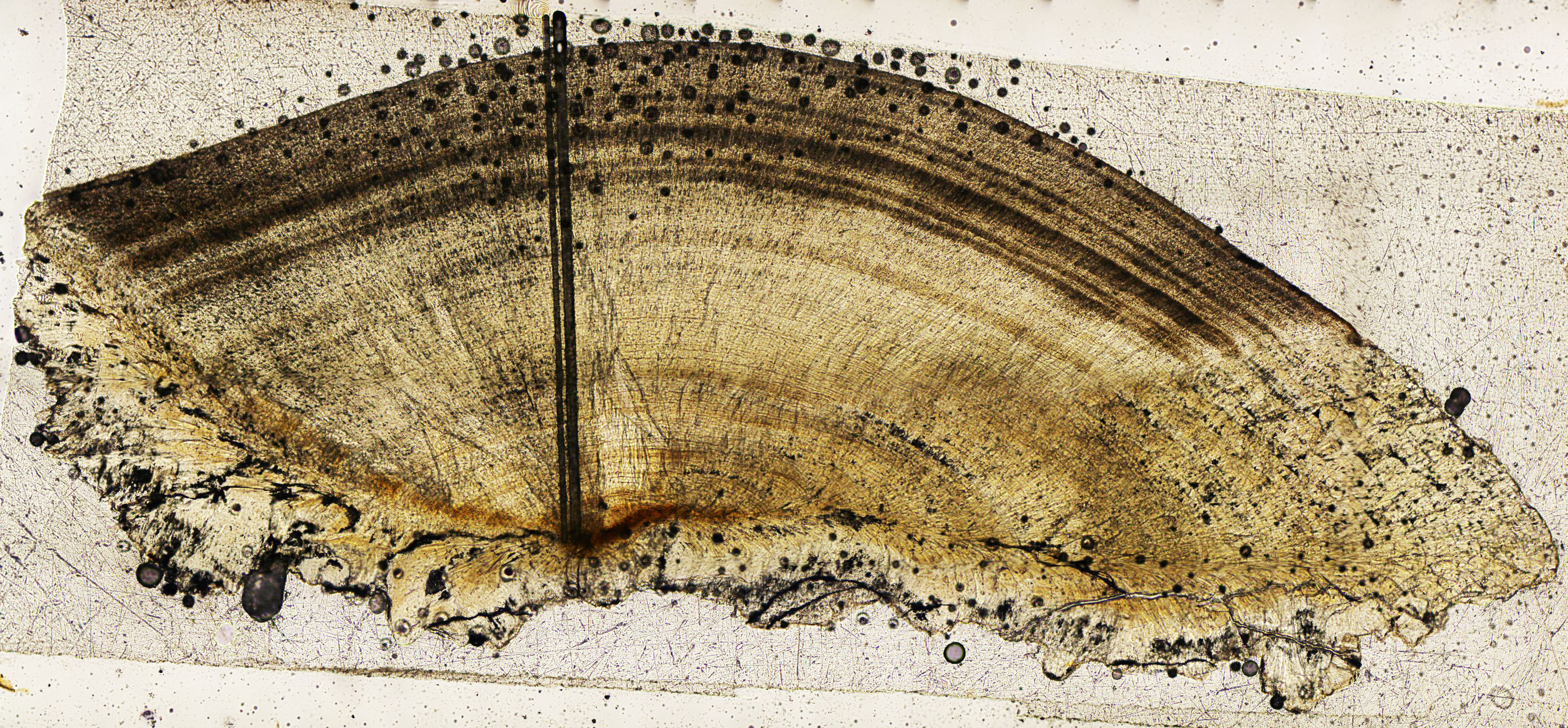Chemical Analysis
Using a machine with the longest name you've ever heard, a laser ablation inductively coupled plasma mass spectrometer (LA-ICP-MS), we can recover the isotopic and trace elemental signals in the otolith. To do this we draw a laser across a line from the center of the otolith (the birth of the fish) to the edge (where the fish died). You can see the straight, black, laser tracks on this picture of an Amazonian catfish otolith from our last paper.

The laser pulverizes a tiny amount of the otolith as it moves, which is swept into the mass spectrometer. The machine breaks the sample into the ions it is made of, then accelerates them around a curve under the force of a large magnet. The ions curve more or less sharply based on their atomic weight, so we can measure the amounts of each element and isotope.
We end up with a graph like this that tracks the chemical signature from the birth of the fish to it's death. (this is an example from one of our previous catfish samples)

- Published on Mar 30, 2016
- 24 views
- 0 comments
- Print this page
- Back to Methods